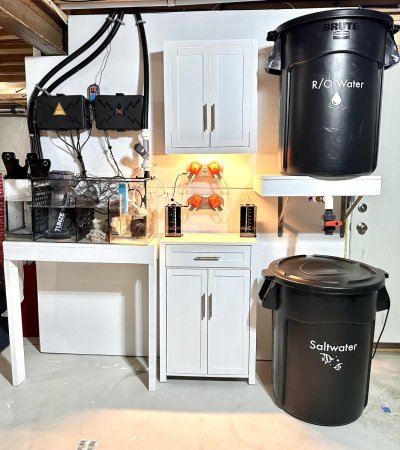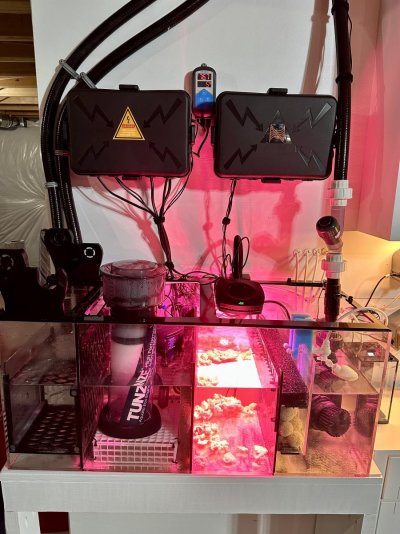Fellow reefers,
What are the benefits and disadvantages to plumbing the RODI directly to the sump? I spent some time searching for the answers and didn't find what I was looking for. BRS has a video on RODI, but it wasn't in detail on this subject.
My current setup I have a water reservoir and fill that every 12-14 days. My RODI water setup is in the garage. So if needed, I could make water for saltwater changes( I don't do, I'm doing moonshine method for 2 years now), emergency water, etc.
The plan is to put the RODI under the sink and run the line through the wall to the sump. Then hook the line to a float valve. There are some thoughts of sensors for the just in case crap happens.
Please share your opinions or experiences in RODI straight to the sump. Thanks for looking.
What are the benefits and disadvantages to plumbing the RODI directly to the sump? I spent some time searching for the answers and didn't find what I was looking for. BRS has a video on RODI, but it wasn't in detail on this subject.
My current setup I have a water reservoir and fill that every 12-14 days. My RODI water setup is in the garage. So if needed, I could make water for saltwater changes( I don't do, I'm doing moonshine method for 2 years now), emergency water, etc.
The plan is to put the RODI under the sink and run the line through the wall to the sump. Then hook the line to a float valve. There are some thoughts of sensors for the just in case crap happens.
Please share your opinions or experiences in RODI straight to the sump. Thanks for looking.




















